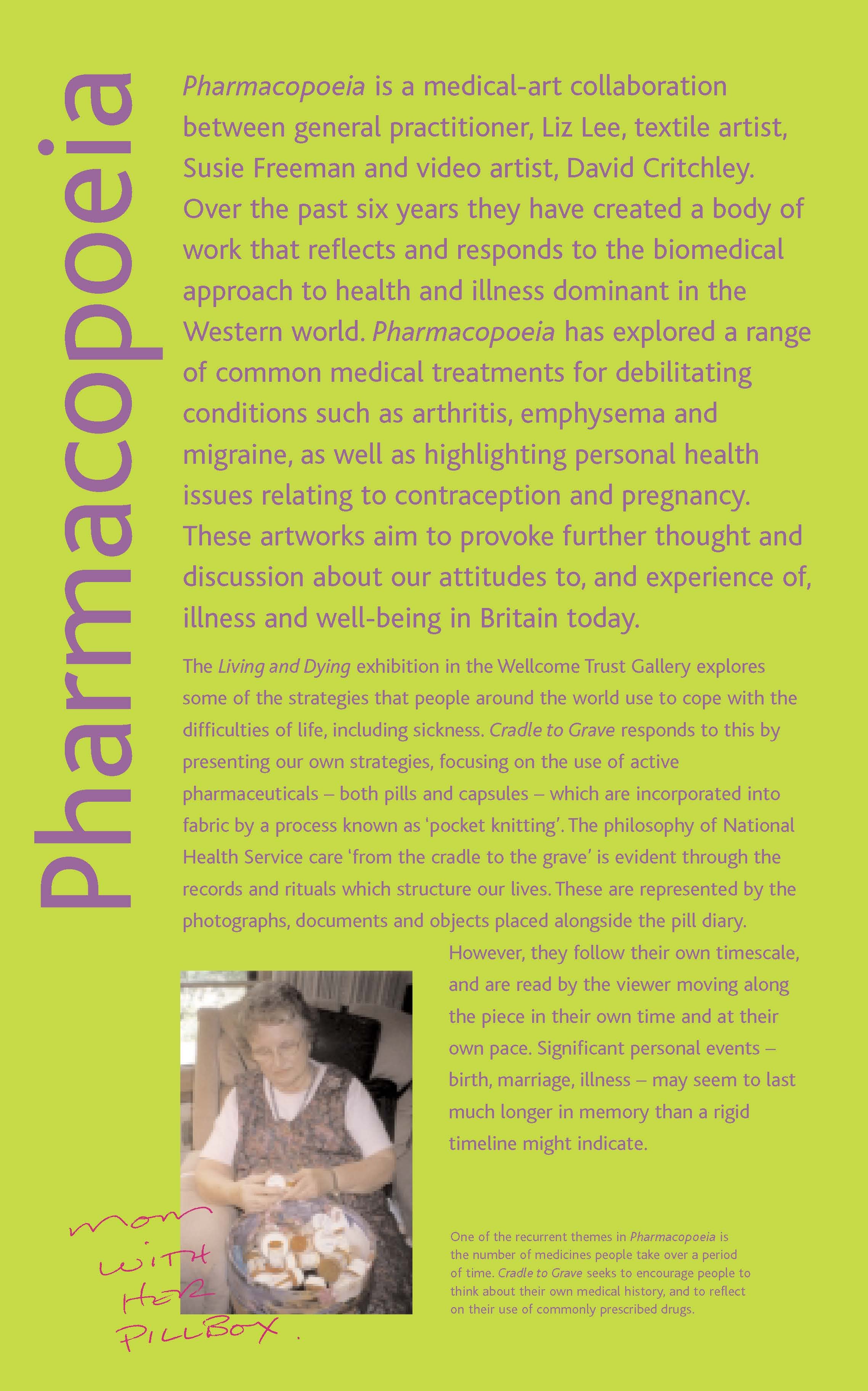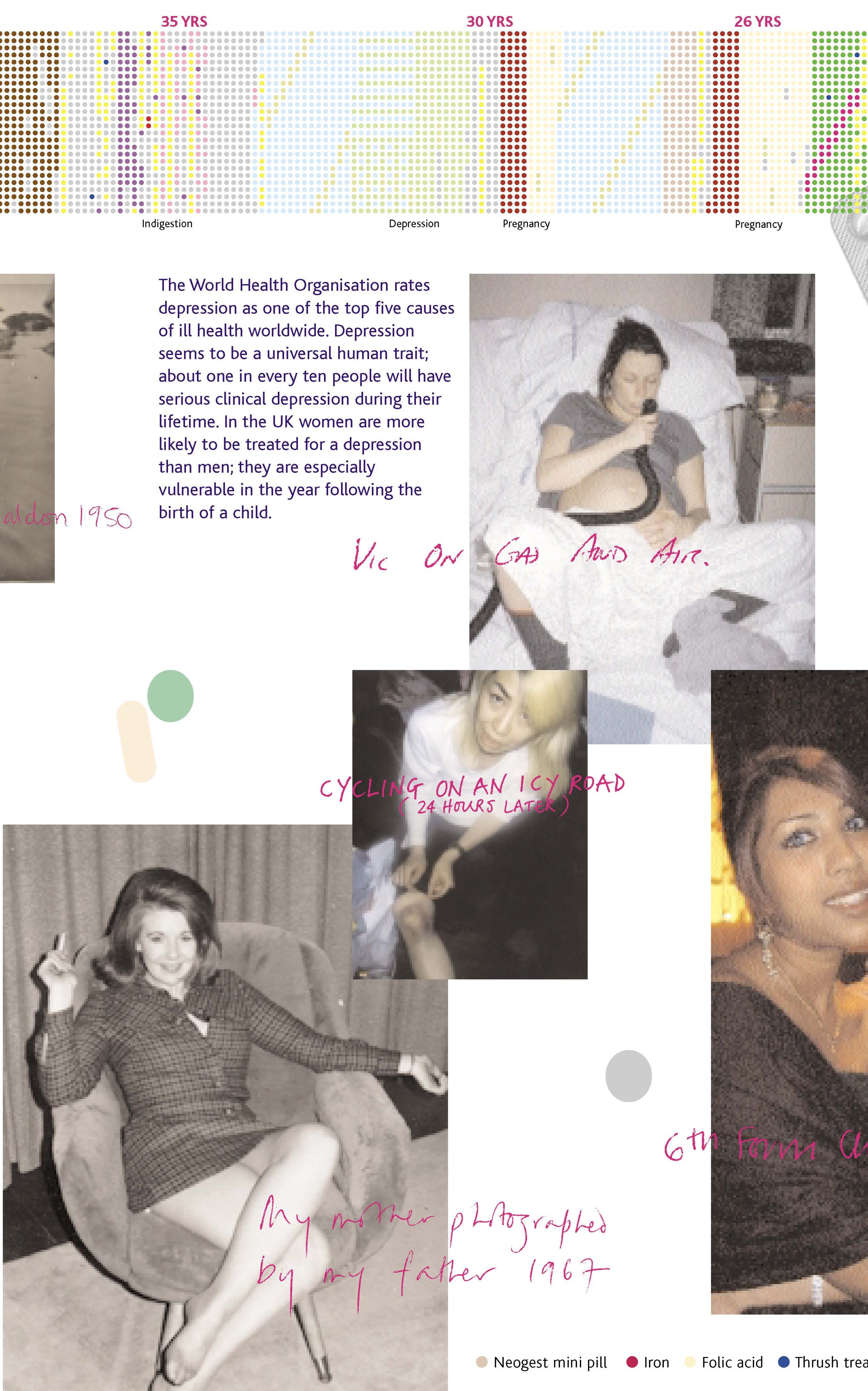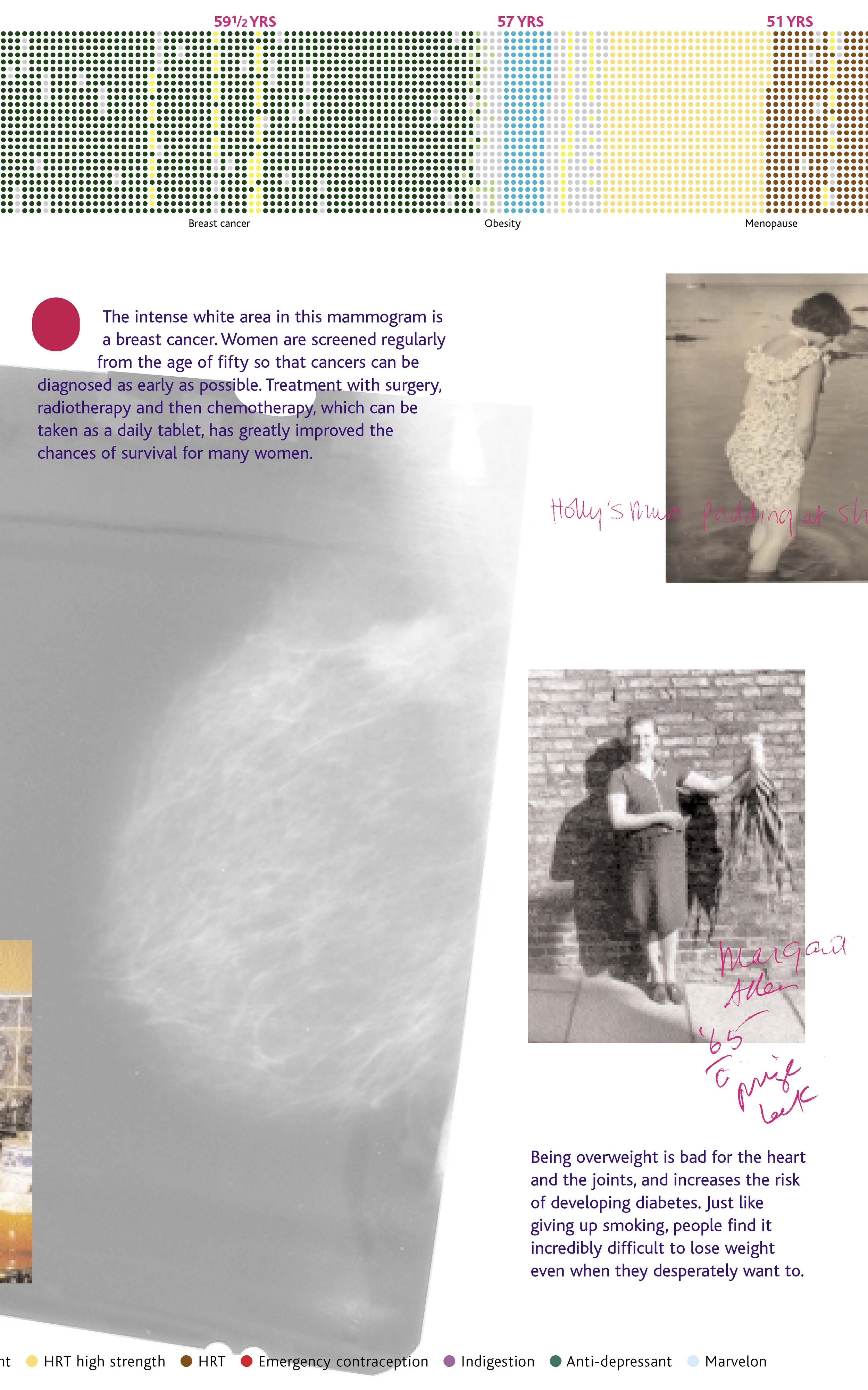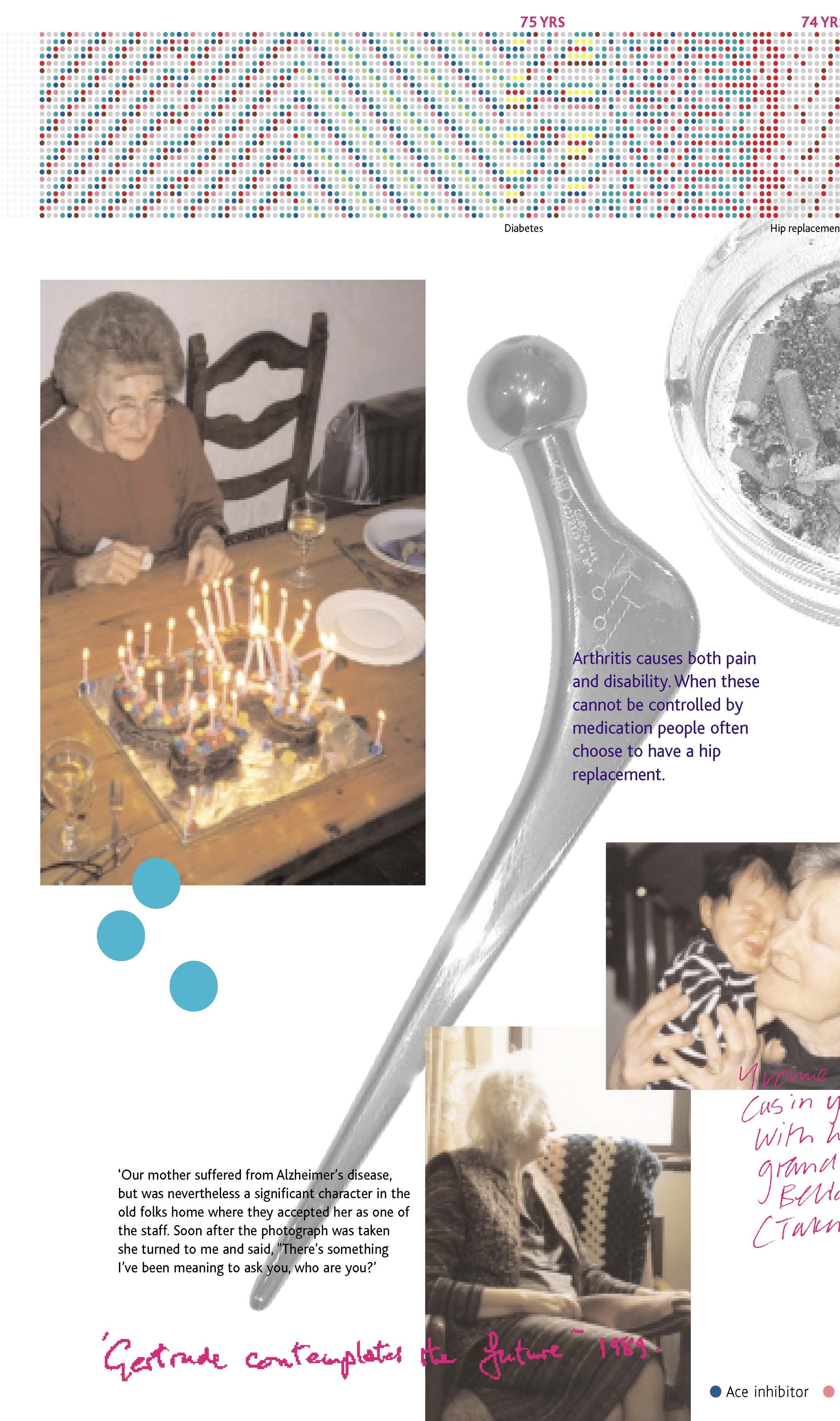Cradle to Grave
Visit the site: cradletograve.org
Each piece contains over 14,000 drugs, the estimated average prescribed to every person in Britain in their lifetime. This does not include over-the-counter remedies, vitamins or other self-prescription pills.
Cradle to Grave is an art installation by Susie Freeman, Dr Liz Lee and David Critchley that explores our approach to health in Britain today, and reflects some of the ways in which people deal with sickness and try to secure well-being. The installation uses three linked narratives to convey this message: a pill 'diary', objects and documents, and personal photographs.
“Usually we perceive the course of life as an extension of time, but here life is an extension in space. The abstract ordering of the life course in time is replaced with a concrete physical length of a fabric in a room.”
On either side of the pill diary are personal objects, documents and medical equipment that relate to daily life as well as to significant events. Interspersing these are groups of photographs, with captions written by the owners, tracing typical moments in real people's lives. The photographs, drawn from the albums of friends, family and colleagues of the artists, reflect personal responses to health and show that maintaining well-being is often more complex than just treating periods of illness.
“How do people form opinions about scientific issues? It is unrealistic to expect people to sift through masses of information to draw up a reasoned conclusion. We are mostly ‘cognitive misers’, drawing upon a minimum amount of information.
What is crucial is how an issue is ‘framed’ – the context in which it is communicated and how it fits with people’s pre-existing thinking. Understanding these aspects is crucial to effective science communication. ”
Charlie steam pump











